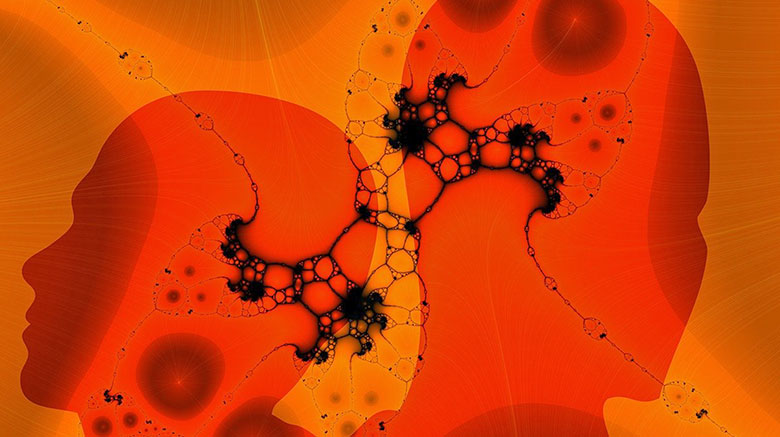An Excerpt from: Sex Gender and Epigenetics: From Bedside to Molecule
Ask a layperson what biologically differentiates males and females, and at least two different answers will undoubtedly emerge: gonads and hormones. Indeed, the fact that males have testes and females have ovaries leads to a lifelong sexually dimorphic hormonal profile, especially in testosterone, estradiol, and progesterone levels. These sex hormones exert both permanent and protein modification.
In particular, sex hormones appear to have sex-dependent effects on the cardiometabolic profile. Body composition is a prime example. Strong evidence indicates that estrogen protects women from the accumulation of visceral abdominal tissue. (VAT). 1-3 This is clinically significant because VAT is strongly associated with poor cardiometabolic health and CVD.4 A clear sex difference in body shape is observed in early adulthood when BMI is associated with hips and bust measurements in women but with chest and waist measurements in men.5 While men naturally have low levels of estrogen, testosterone levels is associated with an increase in VAT6-7.
These observations can be generalized. Normal physiological concentrations of sex, hormones improve the cardiometabolic health of both sexes.8-9 The converse also holds: elevated levels of testosterone in women and estrogen in men lead to poor cardiometabolic health outcomes, as demonstrated by women with polycystic ovary syndrome, 10transmen and on gender affirmative hormonal therapy,11 and hypogonadal men12.Therefore, circulating sex hormones alone cannot explain the observed sex differences in cardiovascular traits. While it is likely that the men and women also have different blueprints, which shifts our attention to the subcellular level and DNA
21-3 Kangas R, Morsiani C, Pizza G, et al, Menopause and adipose tissue:miR-19-p3 is sensitive to hormonal replacement. Oncotarget. 2018;9(2):2279-2294
Marchand GB, Carreau A-M Weisnagel SJ, et al. Increased body fat mass explains the positive association between circulating estradiol and insulin in postmenopausal women. Am J Physiol Endocrinol Metab 2018;314(5):E448-E456
Leenen R, van der Kooy K, Seidell JC, Deurenberg P, Koppeschaar HP. Visceral fat accumulation in relation to sex hormones in obese men and women undergoing weight loss therapy. J Clin Endocrinol Metab. 1994;78(6):1515-1520
4 Piché M-E, Tchernof A, Després J-P. Obesity phenotypes, diabetes, and cardiovascular diseases. Circ Res. 2020;126(11);1477-1500
5 Wells JCK, TreleavenP, Cole TJ. BMI compared with 3-dimensional body shape: the UK National Sizing Survey. Am J Clin Nutr. 2007;85(2):419-425
6-7 Laaksonen DE, Niskanen L, Punnonen K, et al. The metabolic syndrome and smoking in relation to hypogonadism in middle-aged men: a prospective cohort study. J Clin Endocrinol Metab. 2005;90(2):712-719.
Rolf C, von Eckardstein S, Koken U, Nieschlag E. Testosterone substitution of hypogonadal men prevents the age-dependent increases in body mass index, body fat and leptin seen in healthy aging men: results of a cross-sectional study. EurJ Endocrinal. 2002;146(4):505-511.
8-9 dos Santos RL., da Silva FB, Ribierto Jr RF, Stefanon I. Sex hormones in the cardiovascular system. Horm Mol Biol Clin Invest. 2014;18(2):89-103.
Boese AC, Kim SC, Yin K-J, Lee J-P, Hamblin MH. Sex differences in vascular physiology and pathophysiology: estrogen and androgen signaling in health and disease. Am J Physiol Heart Circ Physiol. 2017;313(3):H524-H545.
10 Bajuk Studen K, Pfeifer M, Cardiometabolic risk in polycystic ovary syndrome. Endocr Connect.2018;7(7):R238-R251.
11 Vroccheti C, Castellini G, Iacuaniello D, et al. Does gender-affirming hormonal treatment affect 30-year cardiovascular risk in transgender persons? A two year prospective European study (ENIGI). J sex Med. 2021;18(4):821-829
12 Krzastek SC, Smith RP. Non-testosterone management of male hypogonadism an examination of the existing literature. Transl Androl Urol.2020,9(Suppl.2):S160-S170

